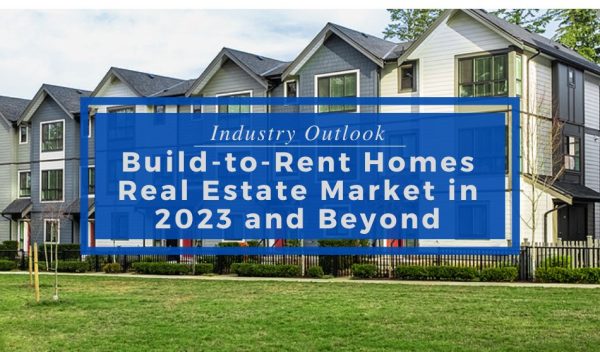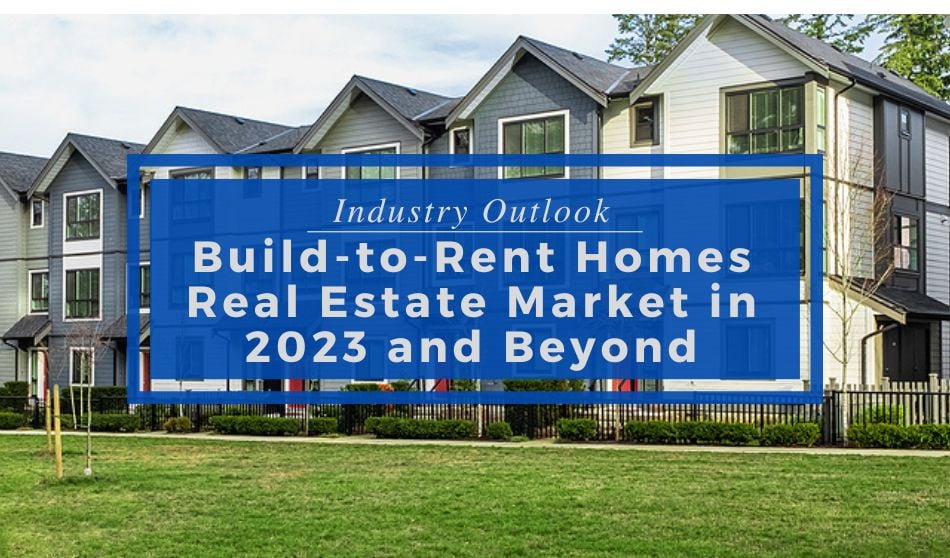
Build-to-Rent (BTR) homes may be a great option for savvy real estate investors looking for a new opportunity to grow their portfolio. This year’s 2023 market trends can add valuable insight if you are considering an investment opportunity in the BTR sector.
As new generations of renters enter the market, unique renter needs have resulted in creative solutions and new opportunities for real estate investors. Build-to-Rent homes (also known as BTR homes), are no exception, but as the industry has boomed, is it headed for a slowdown? A new industry report features top experts who weighed in on the sector and offer their predictions and insights.
What are BTR Homes?
Build-to-Rent homes, as the name implies, are residential properties designed explicitly for rental purposes rather than individual ownership. In the Build-to-Rent model, developers establish homes or even entire communities tailored for long-term rental. This results in a professionally managed, cohesive living environment designed to meet the needs and preferences of modern tenants.
BTR homes come in various types, including:
- Horizontal Apartments: These refer to tightly clustered, professionally managed, freestanding single-family residences, often numbering in the hundreds.
- Duplexes: This is a term for two living units attached to one another.
- Row Homes: Row homes are constructed side by side, sharing a common wall.
- Small Lot Homes: These are individual homes built in close proximity. Including the yard, a small home lot can be as compact as 600 square feet.
Learn more: What are Build-to-Rent Homes?
The Rise of Build-to-Rent Homes
The newest generations of renters have specific goals in mind for their ideal living situations, and there is no doubt that the market has responded accordingly. Gen Z and Millennials renters alike are more earnestly seeking affordable, eco-friendly, community-focused living options.
Due in part to a combination of financial and cultural shifts and the aftermath of a global pandemic, the current generations of renters have different rental needs than their predecessors.
With many renters working from home, renters are more focused than ever on a residential space that fosters community, offers modern technological connectivity, and offers sufficient setups for remote workers. This demand of modern renters has fueled the rise of the Build-to-Rent sector, as investors seek ways to improve their ROI and meet the needs of the modern renter.
Learn more: How to Attract Gen Z Renters
The Outlook for the Build-to-Rent Homes Sector in 2023
There’s no doubt about it. The rise of Build-to-Rent homes is reshaping the real estate market in profound ways, and according to a recent report from Fixr.com, Build-to-Rent homes may be slowing pace, but the sector remains strong. The report highlights the results from a survey of 52 home construction experts and key statistics on the current state of the Build-to-Rent sector and compares the top 20 metro areas with the most BTR completions in the last five years.
According to the Build-to-Rent Homes Report 2023:
- 62% of experts say that the main benefit of BTR homes for tenants is avoiding maintenance costs and repairs.
- 55% of experts say Gen Z are driving the demand for BTR, and 41% say millennials.
- Fixr.com estimates that the total number of BTR homes constructed in 2022 to be much higher than many sources claim, estimating a 97% increase in the past five years.
When asked for any additional insight into the sector, Construction Industry Analyst Adam Graham offered this information. “The build-to-rent sector is certainly experiencing significant growth, with Fixr.com estimating around 199,250 BTR homes constructed in 2022 alone,” notes Adam Graham. “Although we could see a slowdown in 2023, the underlying demand for suburban, single-family living without the need for homeownership could suggest a promising rebound in 2024.”
Final Thoughts
Overall, it is clear that Build-to-Rent homes has introduced a new dynamic that challenges traditional property development models. With the next generation of renters likely to rent longer before transitioning to homeownership, catering to the needs of renters makes sense. Developers and investors are increasingly recognizing the potential of BTR as a viable and sustainable investment strategy, and experts feel the sector will continue to remain strong.






